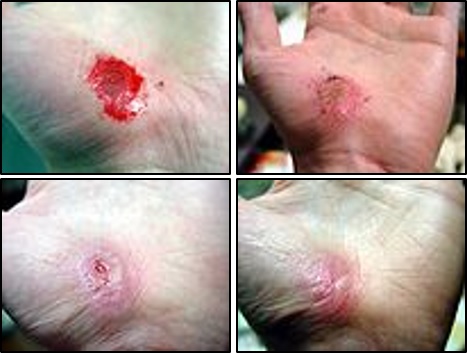TOPNURSE~Moist wound healing is the practice of keeping a wound in an optimally moist environment in order to promote faster healing. Research has shown that moist wound healing is three to five times quicker than the healing of wounds that are allowed to dry out.
British researcher George D. Winter described the benefits of moist wound healing in the 1960s. His research demonstrated that moist environments optimize healing of wounds. In the 1970s and 80s, moist wound healing became a standard practice. During the late 1980s and 90s, the field of moist wound dressings was thoroughly researched and many new wound dressing products were developed such as hydrogels, foams and alginates. Increasingly, wound dressings began to be seen as not just protective measures, but active parts of the healing process.
What are the Benefits of Moist Wound Healing?
Before the theory of moist wound healing was developed, dressings were used primarily to absorb fluid, protect the wound from injury and limit exposure to infections. The natural scab on the wound was considered to be a normal part of the healing process. However, moist healing theory discovered that by preventing the body from developing a scab, wounds could not only be healed faster, but also better. Here are some of the benefits of moist wound healing:
Wound Healing Takes Less Time: When the body creates a scab or eschar, that requires time and energy. Additional energy is required to break down the scab after the wound is healed. In a moist wound healing environment, the body is able to focus on healing the wound rather than protecting it, and wounds heal faster.
Keratinocyte Cells Function More Easily: Keratinocytes, a major component of the epidermis, have several critical roles in wound healing. The cross-talk between keratinocytes and the other types of cells involved in wound healing is crucial for effective closure of the wound. In dry wounds, keratinocytes must burrow underneath the wound bed in order to find a moist area to move forward. In a moist wound healing environment, keratinocytes can easily travel across the wound surface more quickly and easily.
Autolytic Debridement is Facilitated: Moist environments trap endogenous proteolytic enzymes in the wound. This allows those enzymes to more efficiently perform autolytic debridement to break down necrotic tissue. Along with speeding healing, moist wound environments allow for the body’s natural process of healing to work more effectively.
Decreases Incidence of Wound Infection: A moist wound environment reduces the possibility of infection by creating a hypoxic environment in the wound bed which promotes angiogenesis, decreases the pH, and makes the wound area inhospitable to bacteria.
Preserves Growth Factors in Wound Fluid: Growth factors are natural proteins which control key cellular activities during the tissue repair process. Moist wound healing allows the growth factors to be preserved on the wound bed to repair tissues more quickly.
Stimulates Collagen Synthesis: Moist wound healing promotes production of collagen by the fibroblasts. Since collagen is the basis of the new tissue that will heal the wound, this increased production helps the body lay down the matrix for new tissue more quickly so that the cells necessary for healing are attracted.
Reduces Pain: Another benefit of moist wound treatment is that there is reduced pain. With less pain, there is also a reduced stress response and less fatigue in patients which also aids in the healing process. Decreased pain can also lead to better patient mobility, which improves circulation, oxygenation, and allows for better healing.
Reduces Scarring: Moist wound treatment, by promoting the growth and movement of new cells and ensuring that proteins for closing the wound are efficient, causes reduced inflammation, promotes more even skin formation and therefore reduces scarring.
The Importance of Moist Wound Healing
For the best wound care outcome and the quickest healing process, moist wound healing is the best choice. Today's wound care dressings have moisture management properties to fulfill all of the functions of the passive dressings of earlier times, but also promote faster healing, reduce pain, encourage vapor transmission, promote autolytic debridement, and also act as a bacterial barrier.
Source














